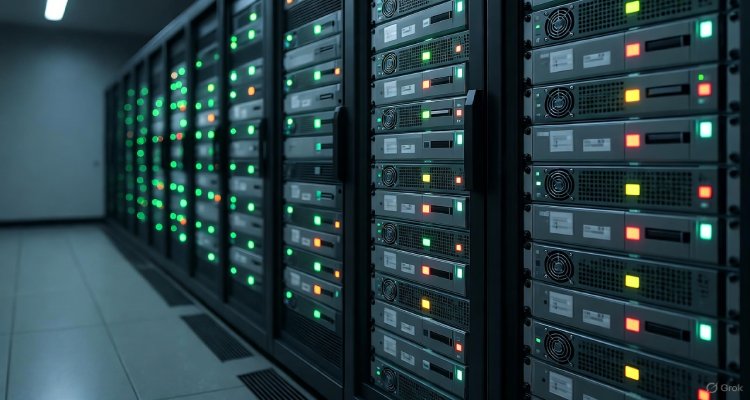The Hidden Carbon Cost of Your Streaming Habits
Streaming video may feel lightweight, but it hides a significant carbon cost. Explore how your binge-watching affects the environment—and what can be done about it.
Introduction: The Price Tag Behind Play
Few people think about climate change while watching a favorite show or listening to a playlist online—but each click to stream is powered by an invisible web of energy-intensive servers and devices. As digital entertainment soars in popularity, experts are sounding the alarm: the carbon footprint of streaming isn’t just rising, it’s on track to rival some of the world’s most polluting industries.eatcommunity+1
Context & Background: Streaming Goes Mainstream
Over the past decade, video streaming has exploded worldwide. More than 99% of U.S. households pay for at least one streaming service—in many parts of the world, binge-watching is now the norm, not the exception. By 2025, global streaming traffic is expected to make up over 80% of all internet data, powered by the relentless demand for high-definition content.amperecomputing+1
Fueling this digital surge are data centers, climate-controlled warehouses stuffed with computers that store, process, and deliver everything from viral clips to blockbuster movies. Most consumers remain unaware that these data centers use vast amounts of energy; some studies estimate that, by 2025, data centers could consume as much electricity as Switzerland produces in three years.broadpeak+2
Main Developments: Emissions Add Up
So, what’s the real carbon cost every time someone streams a show? The numbers are eye-opening:
-
Streaming an hour of video typically emits between 55 and 206 grams of CO₂ equivalents (gCO₂e), depending on device, quality, and region.carbontrust+2
-
High-definition streaming on a large TV produces the most emissions—comparable to driving a small car a short distance.reddit+1
-
Streaming habits contribute to a growing share of digital emissions, accounting for up to 4% of global greenhouse gas emissions—double the carbon footprint of the aviation industry.ecomatcher+1
Behind every “play” button, energy is consumed at three key stages:
Preparation: Content is stored, managed, and compressed in data centers.
Delivery: The internet infrastructure—fiber optic cables, routers—transmits data to homes worldwide.
Consumption: The device itself (TV, laptop, or smartphone) uses electricity to play the content.
Critically, the end-user device and transmission together account for the majority of carbon output, with data centers responsible for about a third of the total emissions. As technology upgrades and streaming demand grow, so too does the industry’s energy appetite.carbonliteracy+2
Expert Insight & Public Reaction
Climate experts urge digital consumers not to underestimate their impact. “The carbon footprint of the digital age is growing faster than most people realize,” notes a recent analysis. According to the International Energy Agency, streaming already makes up 1% to 2% of global electricity use, fueled by non-renewable sources in many regions.globalbioenergy+1
Many everyday viewers are shocked to learn the true environmental impact of their digital habits. As one sustainability blogger recounted, “I had no idea watching a few episodes on Netflix could contribute to climate change”.eatcommunity
Streaming platforms themselves are responding: Netflix, Google, Amazon, and others are investing heavily in renewable energy for their data centers. Innovations in server technology promise to cut carbon emissions dramatically—switching to energy-efficient chips and cleaner grids could reduce power usage by as much as 80%.greenly+1
Impact & Implications: What’s Next?
If current trends continue, the carbon cost of streaming is only set to grow—especially with data demands from AI, 4K video, and virtual reality on the rise. By 2030, without action, total emissions could double.ecomatcher
The implications ripple far beyond just individual actions:
-
Consumers can lower their impact by watching on smaller devices, adjusting video quality, and unplugging equipment when not in use.streamlike+1
-
Industry leaders need to accelerate data center modernization and purchase greener electricity.amperecomputing+1
-
Policy makers may implement carbon reporting or regulations for streaming platforms, just as they do for airlines and power plants.
The challenge is urgent: meaningful emissions reductions depend on coordinated action from both the digital industry and the billions of global viewers.
Conclusion: Rethinking Entertainment in a Warming World
Streaming video and music are now woven into everyday life—but their hidden carbon cost deserves far more public scrutiny. While each viewing session seems harmless, together they generate a tidal wave of emissions with real planetary consequences. The future of streaming—and the planet—depends on finding more energy-efficient ways to power the world’s favorite pastimes.eatcommunity+1
Disclaimer: This article is intended for general informational purposes and should not be taken as environmental or regulatory advice. Readers should refer to official sources and experts for further guidance.











